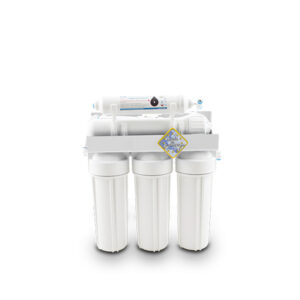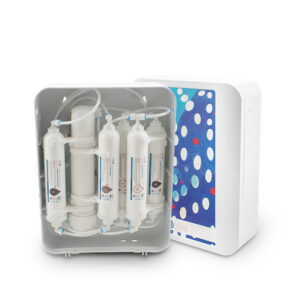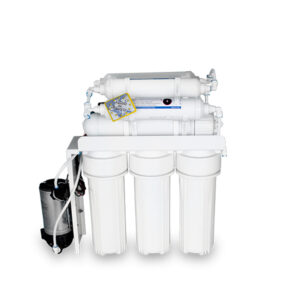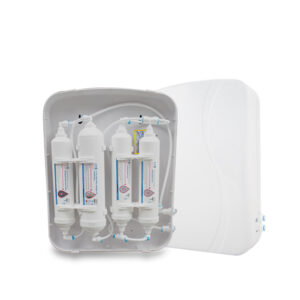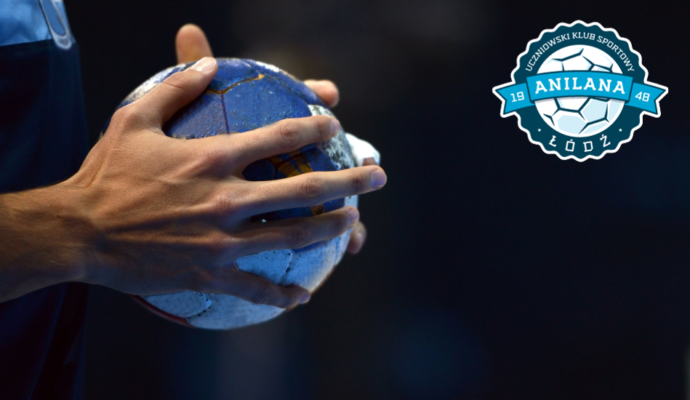The best drinking water filters for home
When it comes to drinking water at home, we tend to choose the one in plastic bottles over the tap water. But even though it is convenient to have a bottle of water at hand, it’s not the best choice eco- and moneywise. Tap water is an option, but the taste usually calls for some upgrade. And this may be easier and cheaper than you think.
We consider bottled water healthy and tasty, but it’s mostly marketing. When you do some brief research on this topic, you will find out that tap water has the same composition and quality as the one poured in a plastic, disposable bottle. It gets even more interesting when you do the maths. We have already done it for you, so leave your calculator alone.
If you drink 2 litres of water daily, it will take you roughly 40 bottles of water each month to keep yourself hydrated. This number will increase up to 160 bottles per month for a family of four. That’s a lot of plastic. Bottled water is also expensive and can cost you as much as 155 EUR per month.
160 plastic bottles for 150 EUR monthly – those numbers speak for themselves. It is a lot of money, and also a lot of weight to carry. From this perspective, switching to tap water seems like a good idea. Let’s have a closer look at that.
Drinking tap water – is it safe?
Yes, it is safe. Our homes are supplied with city water. The water is treated against chemical contaminants and sediments to make it safe for drinking and general use. Water is also sanitised to eliminate bacteria and microorganisms and prevent them from spreading.
After the treatment, the water is ready to drink straight from the tap.
What makes the water taste bad?
We know by experience that most drinking water complaints relate to taste and smell. We know by experience that even after the initial treatment, the tap water isn’t always clear and good-tasting. When your water smells like a swimming pool and has a poignant aftertaste, it is because of chlorine.
Chlorine sanitises water and makes it safe for drinking. When used in excess, it is perceptible in the raw water. It will also transfer into every beverage, such as coffee or tea.
Cloudy water is often the result of sediment pollution. All sorts of undissolved particles may transfer into the water from poorly maintained pipelines, e. g. those at your home to the city water mains.
If your tap water is everything but crystal-clear and tasty, polish it with an under sink water filter.
Drinking water filters – a way to clean drinking water
A drinking water filter consists of at least one to seven filtering cartridges connected with elastic piping for smooth water flow. Each cartridge represents a separate filtration stage and addresses a specific problem you may have with your tap water. The final number of cartridges depends on the water quality and the result you want to achieve.
If you wonder which set of cartridges to choose to transform your tap water into a fresh and tasty beverage, keep on reading. We will clear the path for you.
Active carbon improves water taste
⚠ Removes chlorine and chloroform, but also magnesium, agricultural chemicals, sediments and organic substances.
Active carbon is the fastest way to perfect the taste of overly chlorinated water. It traps chlorine-based compounds during the adsorption process. It occurs when the pollutants stick to the porous surface of carbon as the water passes through it.
Active carbon has a very spongy texture, full of nooks and crannies. Four grams of granulated active carbon has a total surface of a football field, which equals 6400 sqm. A regular cartridge contains about 0.5 kg of active carbon granules. It is a lot of cleansing power to filter your tap water for 3 to 6 months.
Also, the water temperature is crucial for the active carbon to work effectively. An average temperature of 10 ⁰C is optimal for good filtering efficiency.
Ultrafiltration works best for moderately polluted water
⚠ Filters out bacteria, viruses and parasites, but retains most minerals.
Ultrafiltration comes with a lot of benefits. First of all, it is hyper-precise in cleaning water. The ultrafiltration membrane filters out contaminants as small as 0.1 um, which includes most bacteria, viruses and pathogens.
The second benefit is that ultrafiltration treats water instantly every time you turn on the tap. Hence, you don’t need a tank to store filtered water. For this reason, ultrafiltration systems are recommended for small apartments or kitchens with limited space under the sink.
Also, no wastewater is produced during the ultrafiltration process. All the impurities stay at the surface of the membrane, while the entire batch of water passes through the membrane and directly to the tap.
Reverse osmosis – the most precise water filter
⚠ Removes bacteria, viruses, fungi and potentially harmful substances, such as lead, mercury, copper, salt, fluoride, disinfectants and pesticides.
To make sure the drinking water in your home is free of any contaminants, try out reverse osmosis. It is the most popular water filtering method to get rid of water-borne bacteria.
Since RO filtration is thorough, it takes time for the water to pass through the membrane. For this reason, reverse osmosis filtering sets come with tanks to store the filtered water.
RO uses an enormous amount of water, which yields even four times the usual amount. That is why the whole-house RO water filtering systems are not available. You simply don’t need that extra-clean water to flush toilets and do your dishes.
UV lamp – an extra sanitising step
⚠ Removes bacteria and viruses.
The microorganisms are sensitive to ultraviolet light, which damages their DNA. This is why UV lamps are effective when it comes to cleaning water from all sorts of bacteria and viruses.
UV lamps sanitise the water well but do not remove other harmful substances. Hence they are used in sets with other filters for optimal cleaning results.
Proven drinking water filters
Kitchen water filters solve all the problems you can have with your tap water, e. g. salty, bitter, acidic or alkaline water flavour or a metallic, fishy aftertaste. Their compact size makes them fit into any kitchen under-sink cupboard. And the intuitive design makes them easy to install by yourself.
Great drinking water filters to install by yourself
-
Molecular water filter RO5
Read moreFive-stage molecular water filtration system based on reverse osmosis. Includes three mechanical pre-filters and an activated carbon postfilter.
-
Molecular water filter RO6 ALABASTER BOX
Read moreReverse osmosis water filtration system, including activated carbon and remineralising cartridge. Equipped with quick-connetion for fuss-free installation.
-
Molecular water filter RO7 with booster pump and UV lamp
Read moreThe molecular water filter with mineralising cartridge, bioceramic cartridge, booster pump and UV lamp for ultimate water purification.
Delivers the best quality drinking water.
-
SLIM ULTRAFILTRATION
Read moreEfficient water filter based on ultrafiltration. Includes sediment prefilter and a 2,5-inch ultrafiltration membrane. Eqipped with quick connection for easy mounting.
